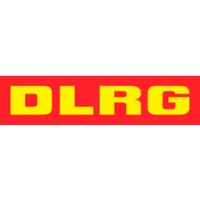
CNAM Company Cyber Security Posture
talent-soft.comRejoindre la Caisse nationale de l’Assurance Maladie (Cnam) c’est mettre ses talents au service d’un acteur majeur de la protection sociale française. C’est aussi évoluer au sein de l’un des systèmes d’information les plus importants d’Europe et développer de nouveaux services, pour garantir à nos publics (assurés, professionnels de santé et employeurs) des prestations de qualité au plus près de leurs attentes. C’est enfin veiller à la préservation de notre système de santé en garantissant à la population un égal accès aux droits et aux soins tout en régulant les pratiques et les dépenses pour un juste soin au juste coût. Pour cela, la Cnam s’appuie sur les compétences de 2 220 collaborateurs exerçant une centaine de métiers différents – dont la moitié dans le domaine informatique – répartis sur l’ensemble du territoire.
CNAM Company Details
cnam-caisse-nationale-assurance-maladie
3154 employees
61591
922
Government Administration
talent-soft.com
Scan still pending
CNA_4777597
In-progress
Between 900 and 1000
This score is AI-generated and less favored by cyber insurers, who prefer the TPRM score.
 CNAM Global Score
CNAM Global Score.png)

CNAM Company Scoring based on AI Models
| Model Name | Date | Description | Current Score Difference | Score |
|---|---|---|---|---|
| AVERAGE-Industry | 03-12-2025 | This score represents the average cybersecurity rating of companies already scanned within the same industry. It provides a benchmark to compare an individual company's security posture against its industry peers. | N/A | Between 900 and 1000 |
CNAM Company Cyber Security News & History
| Entity | Type | Severity | Impact | Seen | Url ID | Details | View |
|---|---|---|---|---|---|---|---|
| Assurance Maladie | Breach | 90 | 4 | 03/2022 | ASS133730422 | Link | |
Rankiteo Explanation : Attack with significant impact with customers data leaksDescription: The accounts of healthcare staff of insurance body l’Assurance Maladie were hacked in a data security incident and had compromised the health data of more than half a million people in France. The compromised data included the names, surnames, date of birth, social security numbers, GP details, and levels of reimbursement for at least 510,000 people. Around19 accounts, mainly belonging to pharmacists, were affected after their email addresses were compromised. | |||||||
| Cnam (Caisse nationale de l’Assurance Maladie) | Breach | 80 | 4 | 03/2022 | CNA1491522 | Link | |
Rankiteo Explanation : Attack with significant impact with customers data leaksDescription: The accounts of 19 healthcare staff of France’s Caisse Nationale d’assurance Maladie (Cnam) health insurance body were hacked leaking the sensitive information of its patients. The personal information of about 510,000 people including names, surnames, date of birth, social security numbers, GP details, and levels of reimbursement was accessed by the attackers. The health care upon learning about the incident immediately filed a complaint and notified the affected individuals. | |||||||
CNAM Company Subsidiaries

Rejoindre la Caisse nationale de l’Assurance Maladie (Cnam) c’est mettre ses talents au service d’un acteur majeur de la protection sociale française. C’est aussi évoluer au sein de l’un des systèmes d’information les plus importants d’Europe et développer de nouveaux services, pour garantir à nos publics (assurés, professionnels de santé et employeurs) des prestations de qualité au plus près de leurs attentes. C’est enfin veiller à la préservation de notre système de santé en garantissant à la population un égal accès aux droits et aux soins tout en régulant les pratiques et les dépenses pour un juste soin au juste coût. Pour cela, la Cnam s’appuie sur les compétences de 2 220 collaborateurs exerçant une centaine de métiers différents – dont la moitié dans le domaine informatique – répartis sur l’ensemble du territoire.
Access Data Using Our API

Get company history
.png)
CNAM Cyber Security News
Software development and security
This programme teaches participants skills in programming, software project management and IT security, to protect data and onboard vehicle systems. Software ...
French workers are taking more sick leave than ever, but the government can’t afford to foot the bill
For the first six months of 2024, the cost of French workers taking sick leave increased by 8.5% compared to 2023.
Atos successfully deploys Mon Espace Santé, France’s online health platform
Mon Espace Santé is a personal and fully customizable digital service, available to all healthcare system users. It enables all users to store ...
Setting democratic global standards for intelligence agencies: the way forward
Online event on Setting democratic global standards for intelligence agencies: the way forward. 9 November 2020 (2 to 3.30pm CET)

CNAM Similar Companies

State of Missouri
Build the Missouri of tomorrow. Ensure a strong foundation today. Join a group of innovative team members focused on driving the State of Missouri forward. As public servants, our team members have the opportunity to produce work that is both lasting and important. This work serves to protect famil

Agenzia del Territorio
L'Agenzia del Territorio, nata all'interno della riforma del Ministero dell'Economia e delle Finanze, è operativa dal 1 gennaio 2001 ed è un ente pubblico dotato di personalità giuridica e ampia autonomia regolamentare, amministrativa, patrimoniale, organizzativa, contabile e finanziaria. E' costit

District Trade and Industries Center
This is a Government Office we Help People to Organise Their Industry work either is it of new factory or of old ones we provide space as well as loans for them they can help ourself by taking schems from our department like tax free scheme pollution certificate visesh panjiyan fa certifa

New York Army National Guard
The New York Army National Guard is comprised of over 10,000 dedicated Citizen Soldiers. We are everyday people who are members of our community, who also put our lives on hold to defend, aid and protect our State and Great Nation. Our Soldiers are offered 100% Tuition Assistance at SUNY/CUNY Colleg

DLRG
Wir, die Deutsche Lebens-Rettungs-Gesellschaft e.V. (DLRG), sind mit über 1,9 Millionen Mitgliedern und Förderern die größte Wasserrettungsorganisation der Welt. Seit unserer Gründung im Jahr 1913 haben wir es uns zur Aufgabe gemacht, Menschen vor dem Ertrinken zu bewahren. Schirmherr ist Bunde

Air Force Civilian Service
We are on a mission. A mission to defend freedom and preserve liberty. A mission to support the men and women in uniform of the United States Air Force with our talent and dedication and service. Fueled by the challenge and motivated by the opportunities, we’re on a mission to excel in every way. An

Frequently Asked Questions (FAQ) on Cybersecurity Incidents
CNAM CyberSecurity History Information
Total Incidents: According to Rankiteo, CNAM has faced 2 incidents in the past.
Incident Types: The types of cybersecurity incidents that have occurred include ['Breach'].
Total Financial Loss: The total financial loss from these incidents is estimated to be {total_financial_loss}.
Cybersecurity Posture: The company's overall cybersecurity posture is described as Rejoindre la Caisse nationale de l’Assurance Maladie (Cnam) c’est mettre ses talents au service d’un acteur majeur de la protection sociale française. C’est aussi évoluer au sein de l’un des systèmes d’information les plus importants d’Europe et développer de nouveaux services, pour garantir à nos publics (assurés, professionnels de santé et employeurs) des prestations de qualité au plus près de leurs attentes. C’est enfin veiller à la préservation de notre système de santé en garantissant à la population un égal accès aux droits et aux soins tout en régulant les pratiques et les dépenses pour un juste soin au juste coût. Pour cela, la Cnam s’appuie sur les compétences de 2 220 collaborateurs exerçant une centaine de métiers différents – dont la moitié dans le domaine informatique – répartis sur l’ensemble du territoire..
Detection and Response: The company detects and responds to cybersecurity incidents through {description_of_detection_and_response_process}.
Incident Details
Incident 1: Ransomware Attack
Title: {Incident_Title}
Description: {Brief_description_of_the_incident}
Date Detected: {Detection_Date}
Date Publicly Disclosed: {Disclosure_Date}
Date Resolved: {Resolution_Date}
Type: {Type_of_Attack}
Attack Vector: {Attack_Vector}
Vulnerability Exploited: {Vulnerability}
Threat Actor: {Threat_Actor}
Motivation: {Motivation}
Incident 2: Data Breach
Title: {Incident_Title}
Description: {Brief_description_of_the_incident}
Date Detected: {Detection_Date}
Date Publicly Disclosed: {Disclosure_Date}
Date Resolved: {Resolution_Date}
Type: {Type_of_Attack}
Attack Vector: {Attack_Vector}
Vulnerability Exploited: {Vulnerability}
Threat Actor: {Threat_Actor}
Motivation: {Motivation}
Common Attack Types: The most common types of attacks the company has faced are ['Breach'].
Identification of Attack Vectors: The company identifies the attack vectors used in incidents through {description_of_identification_process}.
Impact of the Incidents
Incident 1: Ransomware Attack
Financial Loss: {Financial_Loss}
Data Compromised: {Data_Compromised}
Systems Affected: {Systems_Affected}
Downtime: {Downtime}
Operational Impact: {Operational_Impact}
Conversion Rate Impact: {Conversion_Rate_Impact}
Revenue Loss: {Revenue_Loss}
Customer Complaints: {Customer_Complaints}
Brand Reputation Impact: {Brand_Reputation_Impact}
Legal Liabilities: {Legal_Liabilities}
Identity Theft Risk: {Identity_Theft_Risk}
Payment Information Risk: {Payment_Information_Risk}
Incident 2: Data Breach
Financial Loss: {Financial_Loss}
Data Compromised: {Data_Compromised}
Systems Affected: {Systems_Affected}
Downtime: {Downtime}
Operational Impact: {Operational_Impact}
Conversion Rate Impact: {Conversion_Rate_Impact}
Revenue Loss: {Revenue_Loss}
Customer Complaints: {Customer_Complaints}
Brand Reputation Impact: {Brand_Reputation_Impact}
Legal Liabilities: {Legal_Liabilities}
Identity Theft Risk: {Identity_Theft_Risk}
Payment Information Risk: {Payment_Information_Risk}
Average Financial Loss: The average financial loss per incident is {average_financial_loss}.
Commonly Compromised Data Types: The types of data most commonly compromised in incidents are {list_of_commonly_compromised_data_types}.
Incident 1: Ransomware Attack
Entity Name: {Entity_Name}
Entity Type: {Entity_Type}
Industry: {Industry}
Location: {Location}
Size: {Size}
Customers Affected: {Customers_Affected}
Incident 2: Data Breach
Entity Name: {Entity_Name}
Entity Type: {Entity_Type}
Industry: {Industry}
Location: {Location}
Size: {Size}
Customers Affected: {Customers_Affected}
Response to the Incidents
Incident 1: Ransomware Attack
Incident Response Plan Activated: {Yes/No}
Third Party Assistance: {Yes/No}
Law Enforcement Notified: {Yes/No}
Containment Measures: {Containment_Measures}
Remediation Measures: {Remediation_Measures}
Recovery Measures: {Recovery_Measures}
Communication Strategy: {Communication_Strategy}
Adaptive Behavioral WAF: {Adaptive_Behavioral_WAF}
On-Demand Scrubbing Services: {On_Demand_Scrubbing_Services}
Network Segmentation: {Network_Segmentation}
Enhanced Monitoring: {Enhanced_Monitoring}
Incident 2: Data Breach
Incident Response Plan Activated: {Yes/No}
Third Party Assistance: {Yes/No}
Law Enforcement Notified: {Yes/No}
Containment Measures: {Containment_Measures}
Remediation Measures: {Remediation_Measures}
Recovery Measures: {Recovery_Measures}
Communication Strategy: {Communication_Strategy}
Adaptive Behavioral WAF: {Adaptive_Behavioral_WAF}
On-Demand Scrubbing Services: {On_Demand_Scrubbing_Services}
Network Segmentation: {Network_Segmentation}
Enhanced Monitoring: {Enhanced_Monitoring}
Incident Response Plan: The company's incident response plan is described as {description_of_incident_response_plan}.
Third-Party Assistance: The company involves third-party assistance in incident response through {description_of_third_party_involvement}.
Data Breach Information
Incident 2: Data Breach
Type of Data Compromised: {Type_of_Data}
Number of Records Exposed: {Number_of_Records}
Sensitivity of Data: {Sensitivity_of_Data}
Data Exfiltration: {Yes/No}
Data Encryption: {Yes/No}
File Types Exposed: {File_Types}
Personally Identifiable Information: {Yes/No}
Prevention of Data Exfiltration: The company takes the following measures to prevent data exfiltration: {description_of_prevention_measures}.
Handling of PII Incidents: The company handles incidents involving personally identifiable information (PII) through {description_of_handling_process}.
Ransomware Information
Incident 1: Ransomware Attack
Ransom Demanded: {Ransom_Amount}
Ransom Paid: {Ransom_Paid}
Ransomware Strain: {Ransomware_Strain}
Data Encryption: {Yes/No}
Data Exfiltration: {Yes/No}
Ransom Payment Policy: The company's policy on paying ransoms in ransomware incidents is described as {description_of_ransom_payment_policy}.
Data Recovery from Ransomware: The company recovers data encrypted by ransomware through {description_of_data_recovery_process}.
Regulatory Compliance
Incident 1: Ransomware Attack
Regulations Violated: {Regulations_Violated}
Fines Imposed: {Fines_Imposed}
Legal Actions: {Legal_Actions}
Regulatory Notifications: {Regulatory_Notifications}
Incident 2: Data Breach
Regulations Violated: {Regulations_Violated}
Fines Imposed: {Fines_Imposed}
Legal Actions: {Legal_Actions}
Regulatory Notifications: {Regulatory_Notifications}
Regulatory Frameworks: The company complies with the following regulatory frameworks regarding cybersecurity: {list_of_regulatory_frameworks}.
Ensuring Regulatory Compliance: The company ensures compliance with regulatory requirements through {description_of_compliance_measures}.
Lessons Learned and Recommendations
Incident 1: Ransomware Attack
Lessons Learned: {Lessons_Learned}
Incident 2: Data Breach
Lessons Learned: {Lessons_Learned}
Incident 1: Ransomware Attack
Recommendations: {Recommendations}
Incident 2: Data Breach
Recommendations: {Recommendations}
Key Lessons Learned: The key lessons learned from past incidents are {list_of_key_lessons_learned}.
Implemented Recommendations: The company has implemented the following recommendations to improve cybersecurity: {list_of_implemented_recommendations}.
References
Additional Resources: Stakeholders can find additional resources on cybersecurity best practices at {list_of_additional_resources}.
Investigation Status
Incident 1: Ransomware Attack
Investigation Status: {Investigation_Status}
Incident 2: Data Breach
Investigation Status: {Investigation_Status}
Communication of Investigation Status: The company communicates the status of incident investigations to stakeholders through {description_of_communication_process}.
Stakeholder and Customer Advisories
Incident 1: Ransomware Attack
Stakeholder Advisories: {Stakeholder_Advisories}
Customer Advisories: {Customer_Advisories}
Incident 2: Data Breach
Stakeholder Advisories: {Stakeholder_Advisories}
Customer Advisories: {Customer_Advisories}
Advisories Provided: The company provides the following advisories to stakeholders and customers following an incident: {description_of_advisories_provided}.
Initial Access Broker
Incident 1: Ransomware Attack
Entry Point: {Entry_Point}
Reconnaissance Period: {Reconnaissance_Period}
Backdoors Established: {Backdoors_Established}
High Value Targets: {High_Value_Targets}
Data Sold on Dark Web: {Yes/No}
Incident 2: Data Breach
Entry Point: {Entry_Point}
Reconnaissance Period: {Reconnaissance_Period}
Backdoors Established: {Backdoors_Established}
High Value Targets: {High_Value_Targets}
Data Sold on Dark Web: {Yes/No}
Monitoring and Mitigation of Initial Access Brokers: The company monitors and mitigates the activities of initial access brokers through {description_of_monitoring_and_mitigation_measures}.
Post-Incident Analysis
Incident 1: Ransomware Attack
Root Causes: {Root_Causes}
Corrective Actions: {Corrective_Actions}
Incident 2: Data Breach
Root Causes: {Root_Causes}
Corrective Actions: {Corrective_Actions}
Post-Incident Analysis Process: The company's process for conducting post-incident analysis is described as {description_of_post_incident_analysis_process}.
Corrective Actions Taken: The company has taken the following corrective actions based on post-incident analysis: {list_of_corrective_actions_taken}.
Additional Questions
General Information
Ransom Payment History: The company has {paid/not_paid} ransoms in the past.
Last Ransom Demanded: The amount of the last ransom demanded was {last_ransom_amount}.
Last Attacking Group: The attacking group in the last incident was {last_attacking_group}.
Incident Details
Most Recent Incident Detected: The most recent incident detected was on {most_recent_incident_detected_date}.
Most Recent Incident Publicly Disclosed: The most recent incident publicly disclosed was on {most_recent_incident_publicly_disclosed_date}.
Most Recent Incident Resolved: The most recent incident resolved was on {most_recent_incident_resolved_date}.
Impact of the Incidents
Highest Financial Loss: The highest financial loss from an incident was {highest_financial_loss}.
Most Significant Data Compromised: The most significant data compromised in an incident was {most_significant_data_compromised}.
Most Significant System Affected: The most significant system affected in an incident was {most_significant_system_affected}.
Response to the Incidents
Third-Party Assistance in Most Recent Incident: The third-party assistance involved in the most recent incident was {third_party_assistance_in_most_recent_incident}.
Containment Measures in Most Recent Incident: The containment measures taken in the most recent incident were {containment_measures_in_most_recent_incident}.
Data Breach Information
Most Sensitive Data Compromised: The most sensitive data compromised in a breach was {most_sensitive_data_compromised}.
Number of Records Exposed: The number of records exposed in the most significant breach was {number_of_records_exposed}.
Ransomware Information
Highest Ransom Demanded: The highest ransom demanded in a ransomware incident was {highest_ransom_demanded}.
Highest Ransom Paid: The highest ransom paid in a ransomware incident was {highest_ransom_paid}.
Regulatory Compliance
Highest Fine Imposed: The highest fine imposed for a regulatory violation was {highest_fine_imposed}.
Most Significant Legal Action: The most significant legal action taken for a regulatory violation was {most_significant_legal_action}.
Lessons Learned and Recommendations
Most Significant Lesson Learned: The most significant lesson learned from past incidents was {most_significant_lesson_learned}.
Most Significant Recommendation Implemented: The most significant recommendation implemented to improve cybersecurity was {most_significant_recommendation_implemented}.
References
Most Recent Source: The most recent source of information about an incident is {most_recent_source}.
Most Recent URL for Additional Resources: The most recent URL for additional resources on cybersecurity best practices is {most_recent_url}.
Investigation Status
Current Status of Most Recent Investigation: The current status of the most recent investigation is {current_status_of_most_recent_investigation}.
Stakeholder and Customer Advisories
Most Recent Stakeholder Advisory: The most recent stakeholder advisory issued was {most_recent_stakeholder_advisory}.
Most Recent Customer Advisory: The most recent customer advisory issued was {most_recent_customer_advisory}.
Initial Access Broker
Most Recent Entry Point: The most recent entry point used by an initial access broker was {most_recent_entry_point}.
Most Recent Reconnaissance Period: The most recent reconnaissance period for an incident was {most_recent_reconnaissance_period}.
Post-Incident Analysis
Most Significant Root Cause: The most significant root cause identified in post-incident analysis was {most_significant_root_cause}.
Most Significant Corrective Action: The most significant corrective action taken based on post-incident analysis was {most_significant_corrective_action}.
What Do We Measure?
















Every week, Rankiteo analyzes billions of signals to give organizations a sharper, faster view of emerging risks. With deeper, more actionable intelligence at their fingertips, security teams can outpace threat actors, respond instantly to Zero-Day attacks, and dramatically shrink their risk exposure window.
These are some of the factors we use to calculate the overall score:
Identify exposed access points, detect misconfigured SSL certificates, and uncover vulnerabilities across the network infrastructure.
Gain visibility into the software components used within an organization to detect vulnerabilities, manage risk, and ensure supply chain security.
Monitor and manage all IT assets and their configurations to ensure accurate, real-time visibility across the company's technology environment.
Leverage real-time insights on active threats, malware campaigns, and emerging vulnerabilities to proactively defend against evolving cyberattacks.




